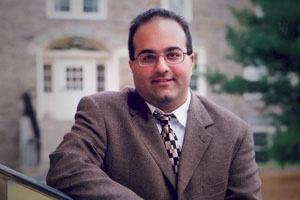
The prominent scholar Omid Safi has written a commentary on Jadaliyya entitled “Reflections on the State of Islamic Studies”. It is well worth reading. I attach the beginning paragraphs below.
I have been asked to share my impressions about the state of Islamic studies in the North American academy. Given that the pioneers of this field include many of my mentors, and many of my own peers have struggled for years to help advance the field to its current state, my observations will not be dispassionate. And since I have been fortunate to have a front-row seat along the development of the field over the last twenty years, I hope I’ll be able to do justice to the current state of the field.
I became a graduate student in the field of Islamic studies in the early 1990s. In those days, almost all of us were “convertsâ€: no one went to undergraduate studies planning to become a professor of Islamic studies. For many, particularly Muslims of transnational background, the usual academic caste options were the familiar: doctor, lawyer, engineer, maybe the always dubious “business.†Almost all of us who entered the field did so by following the siren call of one mentor or another: Seyyed Hossein Nasr, Hamid Algar, Roy Mottahedeh, Bruce Lawrence, Vincent Cornell, Carl Ernst, Michael Sells, Annemarie Schimmel, and a few others.
My own path was similarly convoluted: I had been accepted to medical school, and turned that down to embark on a PhD. It was three or four years before it occurred to me to ask anyone what the likelihood of getting a job in this field was, or what kind of salary one could expect. Imagine my shock towards the end of finishing my PhD to find out that in 1999, there were four jobs in Islamic studies in all of North America That actually represented a remarkable improvement over the 1980s, when typically there was one tenure track job in Islamic studies in the whole country.
The game changer, of course, was 9/11. In the aftermath of those events, the overwhelming majority of American universities and colleges suddenly found themselves without the necessary faculty to “explain†the event to their students, to serve as a spokesperson in engagement with local communities, and to interact with the media. Those are not identical roles, and the list of desiderata was long and imposing. But quickly, the demand for Islamic studies positions went up dramatically: the next few years (until the market crash of 2008) saw between 40-50 tenure track positions per year…
For the rest of Omid’s article, click here.